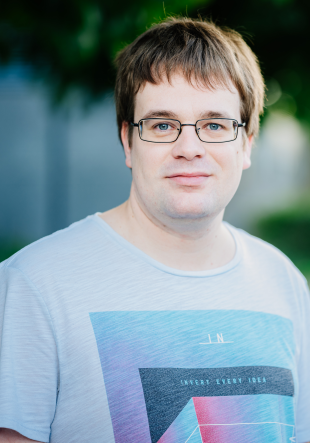About Infrastructure Team 2 (IST 2)
The infrastructure team II ARCTIQUE (Advanced Research on Cryogenic Temperature Integrated QUantum Electronics) specializes in the design, fabrication, and characterization of advanced opto-electronic and photonic devices in cryogenic environments. Our core competence lies in the design and fabrication of cutting-edge semiconductor nanostructures for photonic quantum technology applications, the integration of quantum building blocks on quantum photonic integrated circuits and the characterization of cryogenic functionality of optoelectronic components.
Using heterogeneous and hybrid integration methods we functionalize integrated circuits with quantum light sources, memories, and detectors and control these quantum devices with cryogenic electronics. Our technology and fabrication methods range from molecular beam epitaxy, superconducting film sputtering, evaporation and metallization to reactive ion etching, as well as laser and electron beam lithography.
Our team is also highly skilled in the characterization of cryogenic components, including semiconductors, superconducting detectors, and electronics. We have experience in a variety of testing techniques, including cryogenic temperature, electrical and optical characterization, quantum optics performance and noise measurements.
We also are responsible for cryogenic coupling, which involves the precise alignment and attachment of optical fibers and other components to devices operating at cryogenic temperatures. Our expertise in pigtail and fiber coupling allows us to achieve high coupling efficiency and low optical loss in cryogenic systems.
Overall, our research and support group is dedicated to providing innovative solutions for cryogenic opto-electronic and photonic devices and we are committed to advancing the state of the art in semiconductor nanofabrication, detector design, and cryogenic system integration.
The infrastructure team II consists of 3 post-docs and a lab engineer and will take care of the maintenance and support of the following devices of PhoQS: Nanoscribe, milli-Kelvin cryostat, spectrometer, two wavelength-tunable ultrafast lasers, and a quantum network system for quantum communication applications.
In addition, the following associated devices are already being partially supported by infrastructure team II: RIE-ICP (hybrid quantum photonic devices, (hqpd)), ion-implanter (hqpd), fast oscilloscope and AWG (hqpd), wirebonder (hqpd), commercial superconducting detector systems (hqpd, mesoscopic quantum optics, (mqo)), cryogenic nonlinear optics characterization (mqo).
Possible additional devices: x-ray diffractometer, diamond cutter, thermal evaporator (Optoelectronic materials and devices).

